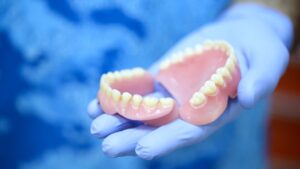Breaking a tooth is a startling and often distressing experience. But not all tooth fractures are the same. The severity can range from a minor cosmetic issue to a major problem that threatens the entire tooth. Understanding the different types of fractures helps in comprehending why a dentist may recommend a particular course of treatment.
In this article, we look at the different types of treatments as well as their costs.
1. The Different Ways Your Broken Tooth Can Be Fixed
Once a dentist has diagnosed the type and extent of the fracture, they will recommend a course of treatment. The goal is always to save the natural tooth whenever possible, restore its function, and ensure a good aesthetic outcome. From simple cosmetic repairs for minor damage to more complex procedures for severe breaks.
i) Dental Bonding (For Minor Chips)
What it is: Dental bonding is a procedure where a tooth-colored composite resin (a durable plastic material) is applied and sculpted onto the tooth to repair minor damage.
Who it’s for: It is an excellent, minimally invasive option for small, simple fractures, such as chipped corners of front teeth or sealing craze lines for cosmetic reasons.
The Process: Bonding is typically completed in a single dental visit. The dentist first slightly roughens the tooth surface to help the material adhere. A conditioning liquid is applied, followed by the tooth-colored resin. The dentist skillfully shapes the resin to match the natural contours of the tooth and then uses an ultraviolet light to harden, or cure, the material. Finally, the bonded area is polished to match the sheen of the rest of the tooth.
ii) Dental Veneers (For Aesthetic Restoration)
What it is: A veneer is a very thin, custom-made shell of tooth-colored material designed to cover the front surface of a tooth to improve its appearance.
Who it’s for: Veneers are ideal for restoring chipped or broken front teeth where aesthetics are a primary concern, especially when a significant portion of the natural tooth remains.
The Process: There are two main types of veneers. Composite veneers are similar to bonding, where resin is applied directly to the tooth and sculpted in a single visit.
Porcelain veneers are more durable and stain-resistant. This process typically requires two visits. In the first, the dentist prepares the tooth by removing a tiny amount of enamel, takes an impression, and places a temporary veneer. The impression is sent to a dental lab where the permanent veneer is fabricated. At the second visit, the permanent veneer is bonded to the tooth.
iii) Dental Crowns (The Gold Standard for Major Breaks)
What it is: A dental crown, or cap, is a custom-made restoration that covers the entire visible portion of a tooth above the gum line. It encases the damaged tooth to restore its shape, size, strength, and appearance.
Who it’s for: A crown is the recommended treatment for more significant damage, such as a fractured cusp, a tooth that has lost a large piece, or a tooth that is weakened after root canal treatment. For a cracked tooth, a crown is essential as it acts like a splint, holding the fractured parts together and preventing the crack from spreading further under chewing pressure.
The Process: Getting a crown usually takes two appointments. During the first visit, the dentist numbs the area and prepares the tooth by filing it down to make space for the crown. An impression of the prepared tooth is taken and sent to a lab. A temporary crown is placed to protect the tooth. At the second visit, the temporary crown is removed, and the permanent crown is checked for fit and color before being permanently cemented into place.
Read our article on getting dental crowns done in Singapore.
iv) Root Canal Therapy (When the Nerve is Involved)
What it is: Root canal therapy is a procedure to treat infection or inflammation within the pulp—the soft tissue inside the tooth containing nerves and blood vessels.
Who it’s for: This treatment is necessary when a fracture is deep enough to expose the pulp to bacteria from the mouth. Signs that the pulp is damaged include severe, spontaneous pain, prolonged sensitivity to heat or cold, tenderness to touch, and discoloration of the tooth. Saving the tooth with a root canal is preferable to extraction, as it maintains the natural tooth in the jawbone.
The Process: The dentist removes the inflamed or infected pulp, carefully cleans and disinfects the inside of the root canals, and then fills and seals the space. Following a root canal, the tooth is no longer vital and can become brittle over time. Therefore, a dental crown is almost always placed over the tooth afterward to protect it from fracturing.
v) Tooth Extraction (The Last Resort)
What it is: Tooth extraction is the complete removal of a tooth from its socket in the bone.
Who it’s for: This is the final option when the damage is too severe for the tooth to be saved. This includes cases like a split tooth, where the tooth is in two separate pieces, or a vertical root fracture that has compromised the root structure beyond repair.
The Process: After an extraction, the dentist will discuss options for replacing the missing tooth, such as a dental implant, bridge, or denture, to restore function and prevent surrounding teeth from shifting.
Read our article on the different options for replacing your missing teeth.

2. Estimated Costs For Dental Procedures To Fixed Broken Tooth
The following table consolidates typical price ranges for procedures related to fixing a broken tooth at private dental clinics in Singapore. These figures are estimates and should be used as a guide. A precise quotation can only be provided by a dentist after a thorough examination.
| Procedure | Estimated Price Range | Key Factors Affecting Cost |
| Dental Bonding | $163 – $500 per tooth | Complexity of the chip, size of the restoration. |
| Composite Veneer | $180 – $491 per tooth | Dentist’s skill, quality of composite material. |
| Porcelain Veneer | $700 – $2,180 per tooth | Lab fees, brand of porcelain, dentist’s experience. |
| Dental Crown (PFM) | $700 – $1,000 per unit | Type of metal alloy used, lab fees. |
| Dental Crown (Zirconia/All-Ceramic) | $1,000 – $1,417 per unit | Brand of material (e.g., Zirconia), aesthetic complexity. |
| Root Canal (Anterior Tooth) | $545 – $709 per tooth | Single, straight canal is less complex. |
| Root Canal (Premolar) | $763 – $818 per tooth | One or two canals, moderate complexity. |
| Root Canal (Molar) | $981 – $1,090 per tooth | Multiple, often curved canals, highest complexity. |
| Simple Extraction (Non-Surgical) | $85 – $273 per tooth | Tooth location, ease of removal. |
| Surgical Extraction | $708 – $1,700+ per tooth | Impaction level, need for bone removal, specialist involvement. |
It is important to consider the total treatment cost. For instance, fixing a severely broken molar might involve a consultation, an X-ray, a root canal treatment, and a dental crown, with each component having its own fee. Patients should always ask for a detailed treatment plan with a full cost breakdown before commencing treatment.
3. Conclusion
A broken tooth is more than a cosmetic inconvenience. If left untreated, it can lead to pain, infection, and more complex health issues. While the cost of such treatments in Singapore can be a significant concern, it should not be a barrier to receiving necessary care. Singapore has robust schemes in place to help citizens manage these expenses. The Community Health Assist Scheme (CHAS) and MediSave are two pillars of financial support that can significantly reduce the out-of-pocket payment for fixing a broken tooth.









